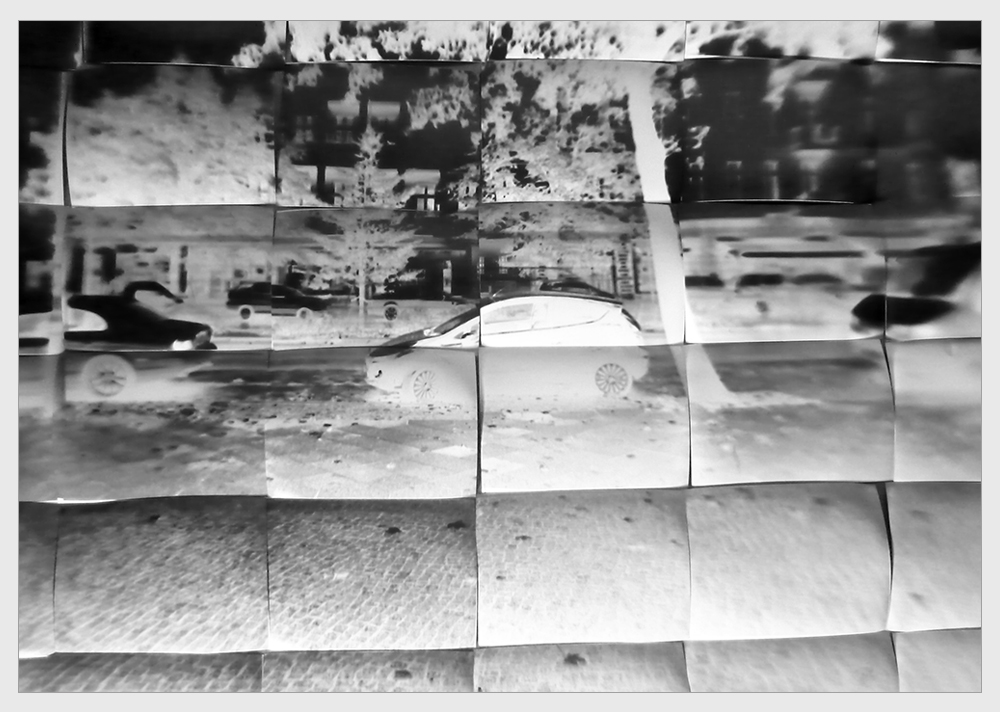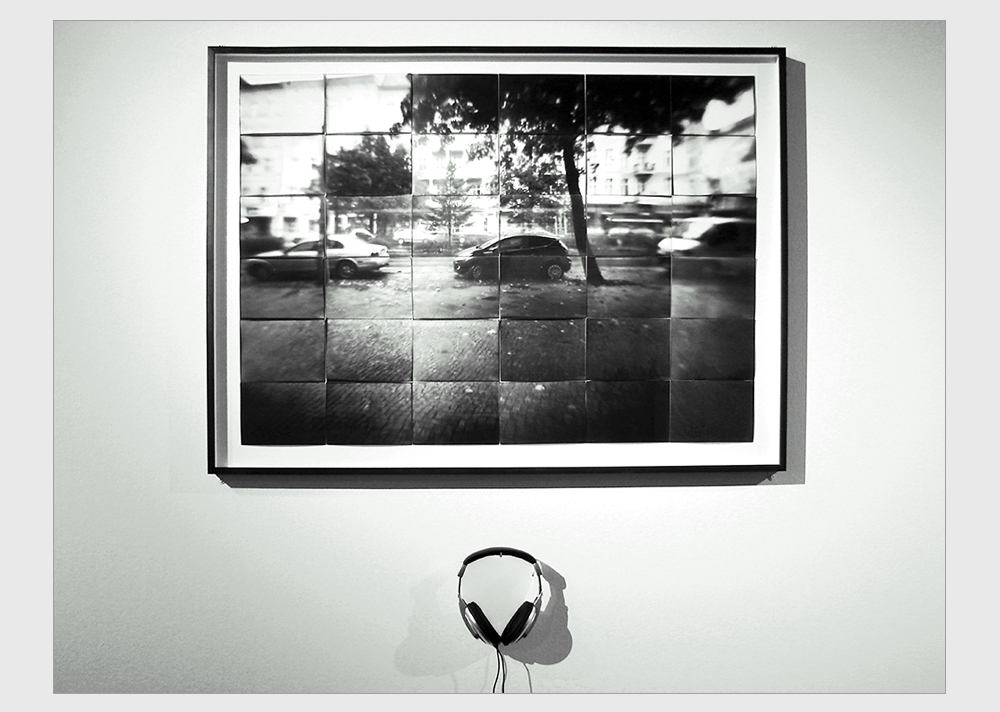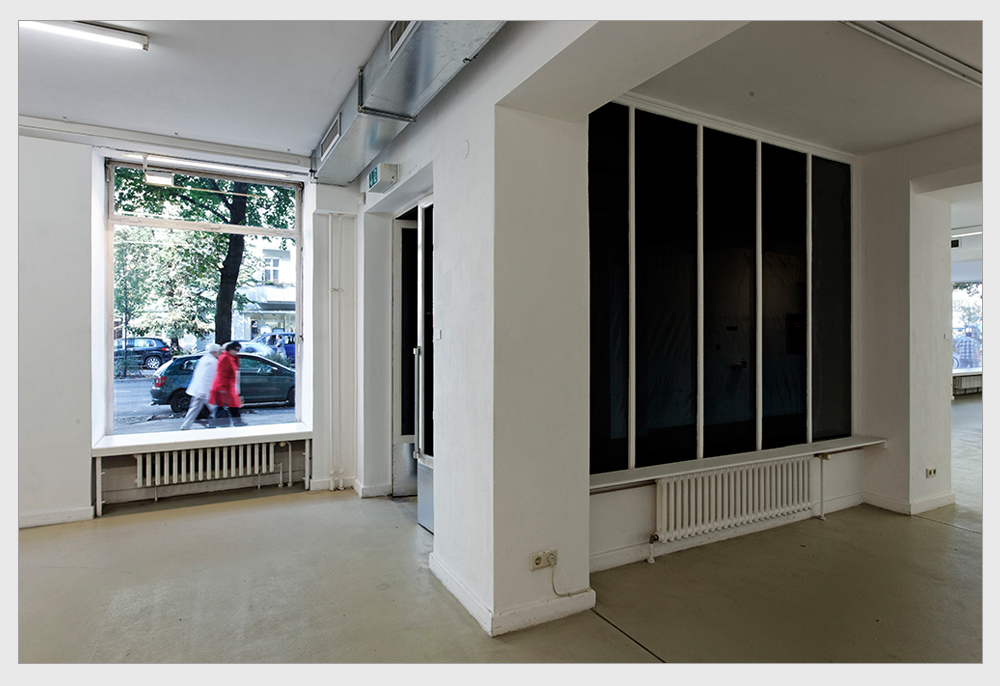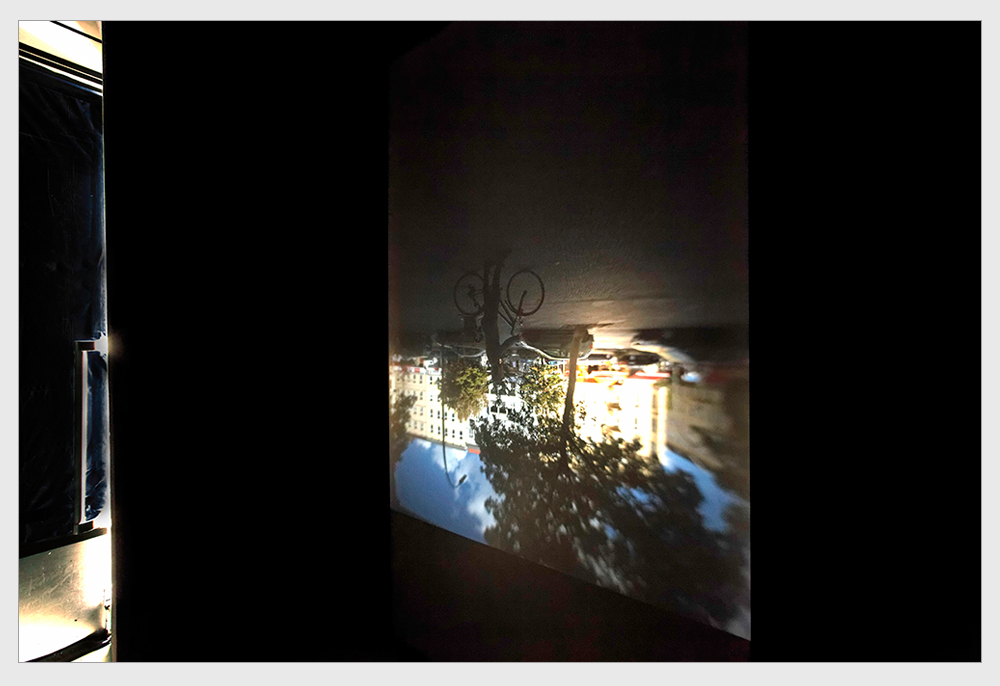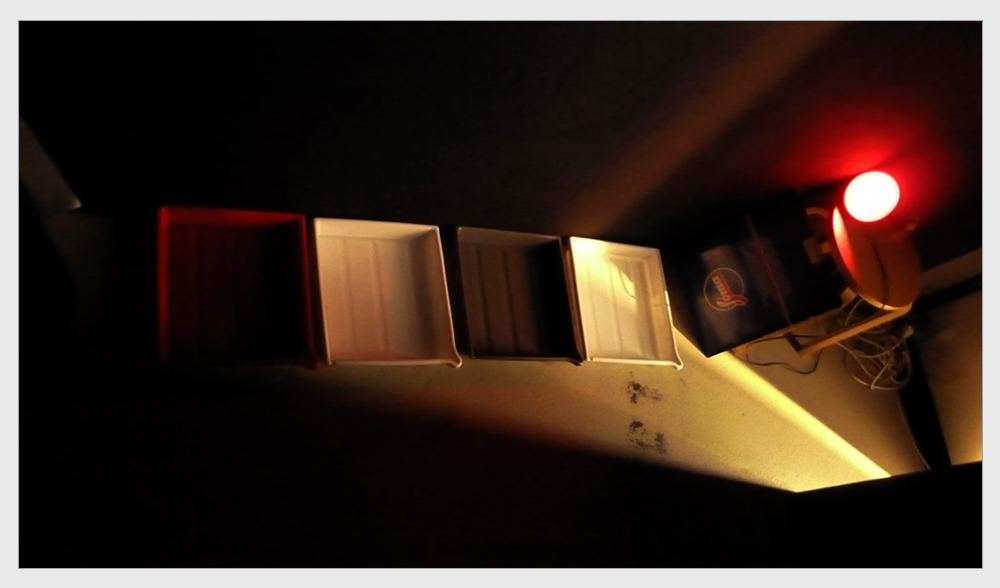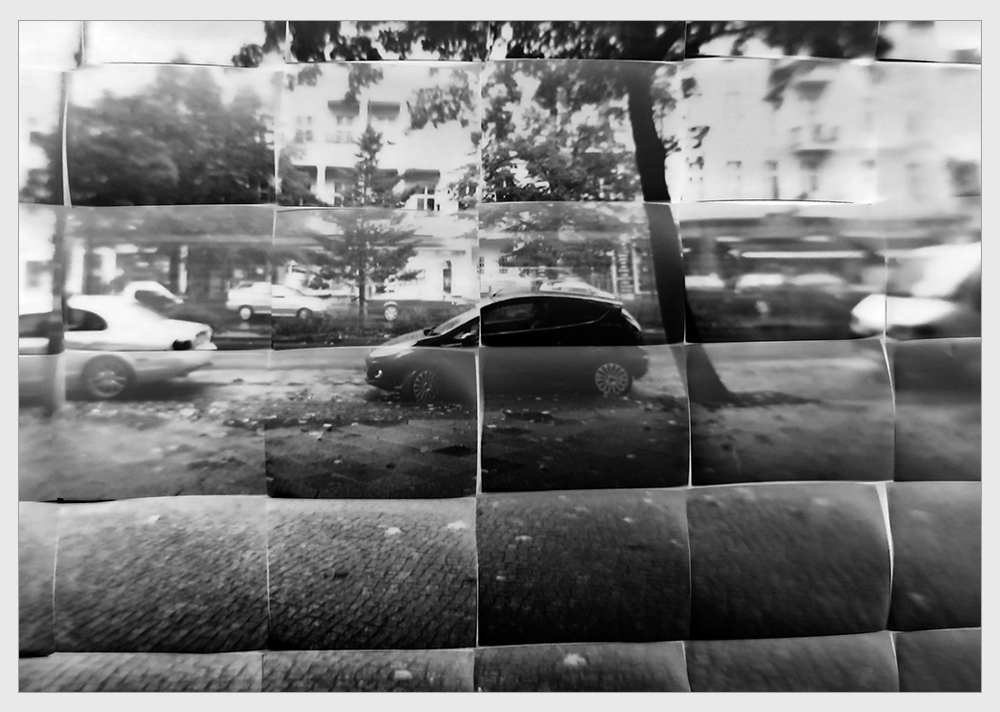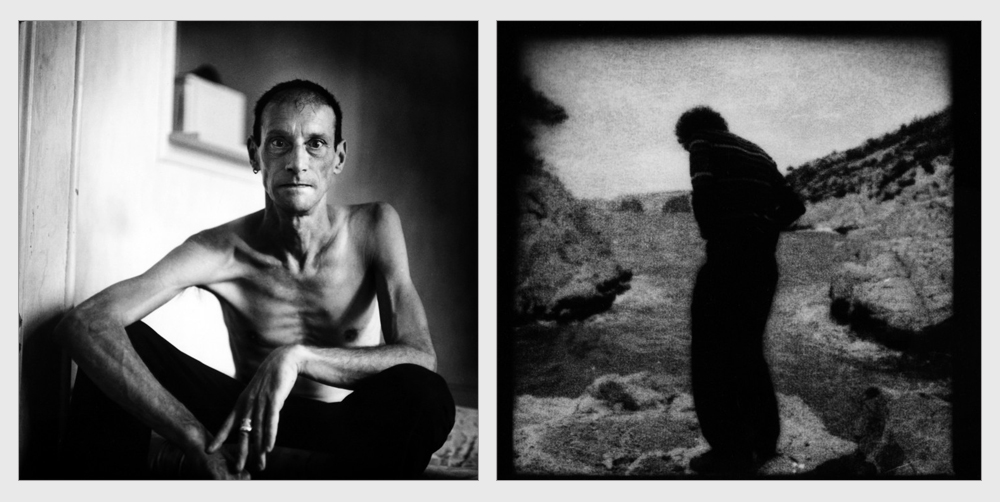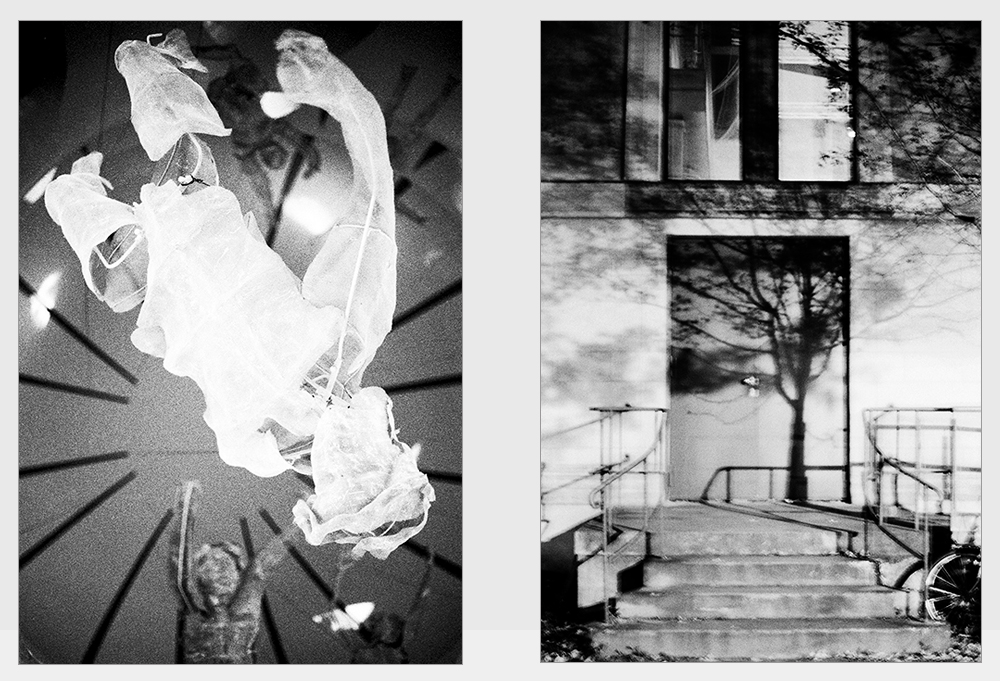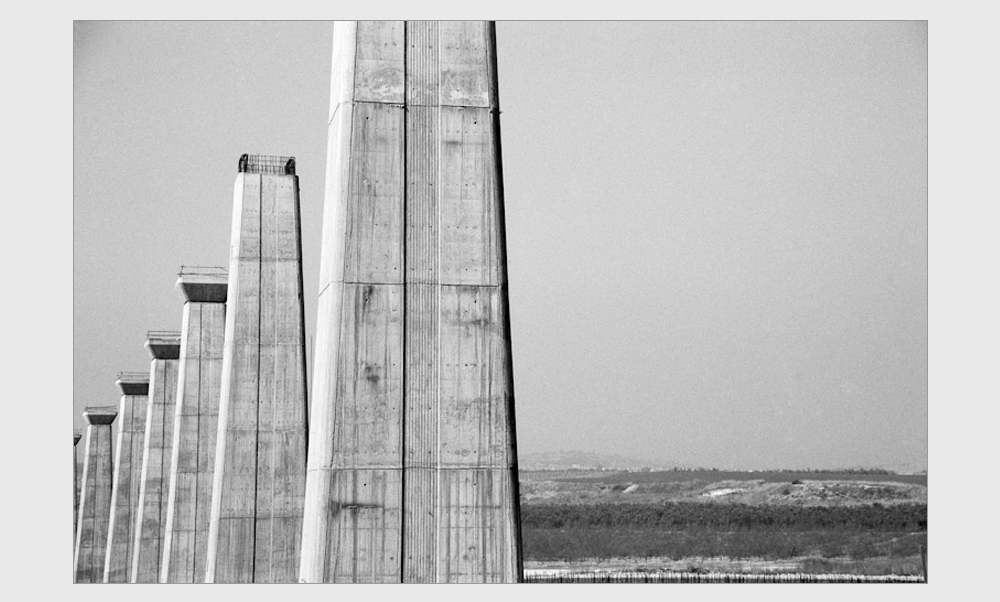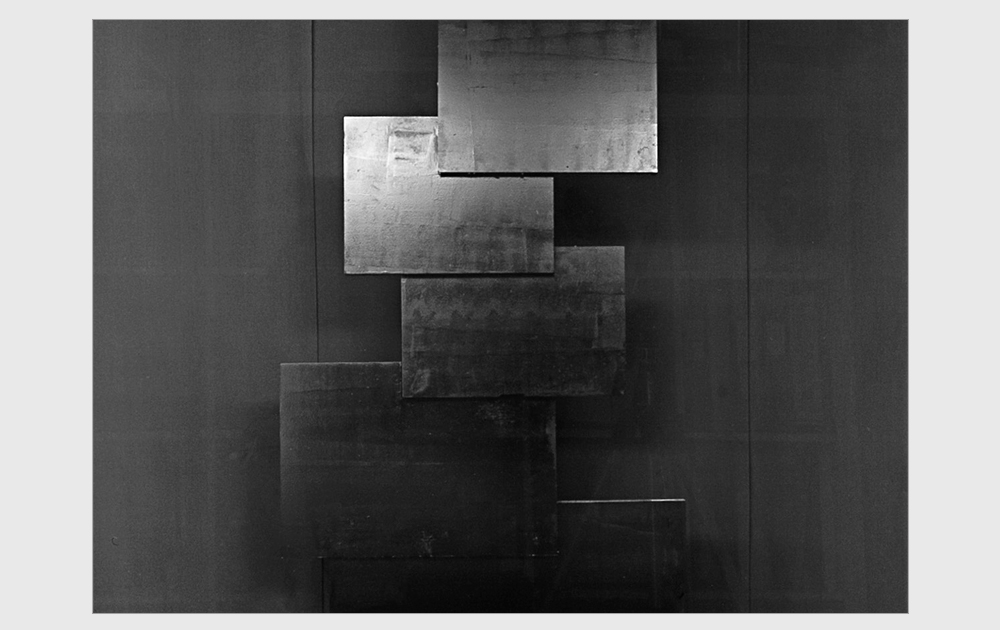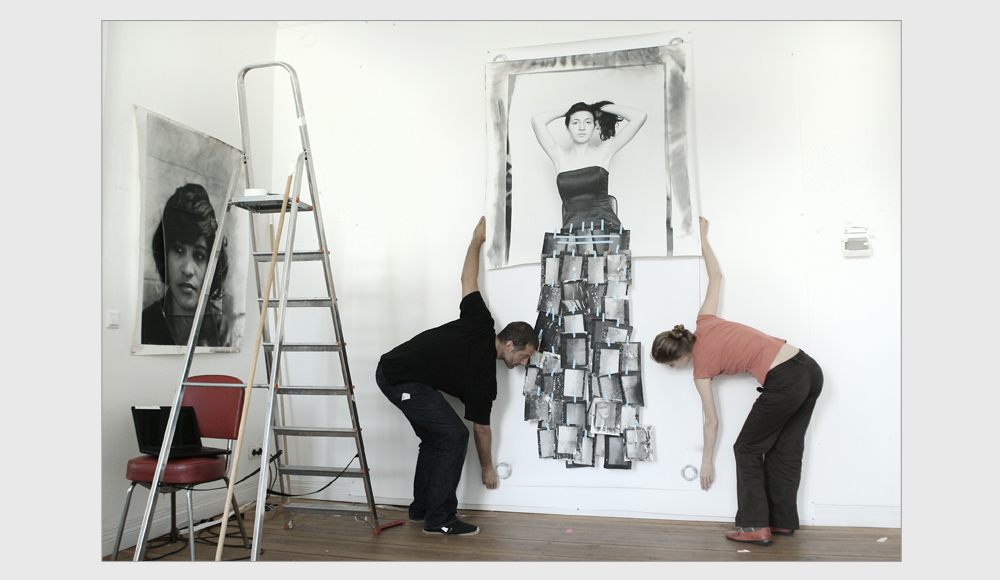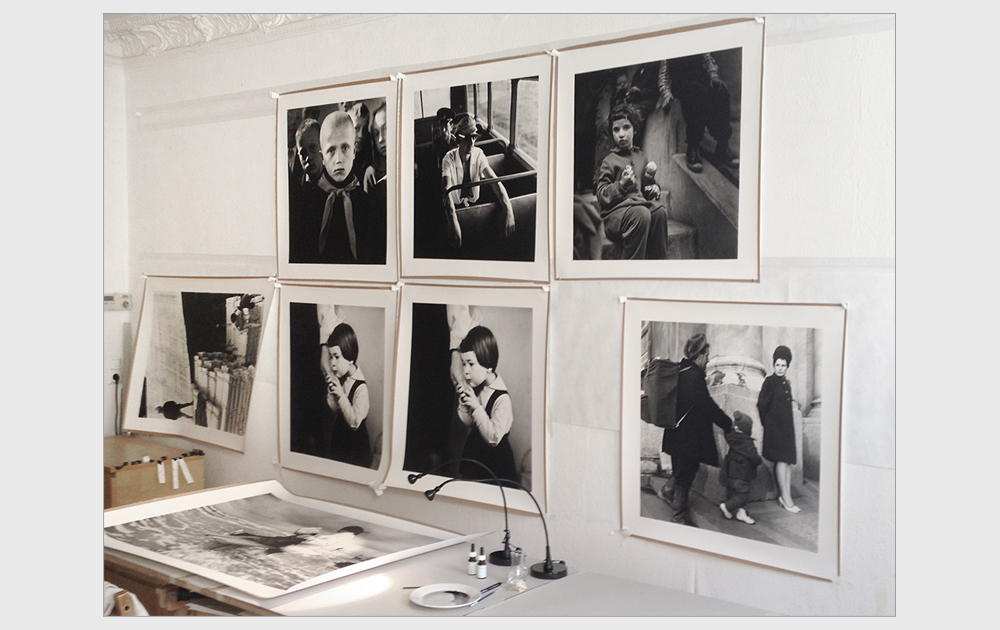Timea Oravecz, a good friend of mine and a great conceptual artist, asked me to participate in a project of hers in 2012: She built a camera obscura in a Berlin-based gallery, which was big enough that people could walk in and see the inverted reflection of the street view on a screen in the dark. It looked interesting, how people and cars were passing by on the top of the screen, while the crowns of the trees were waving on the bottom in the complete darkness. Using a camera obscura is a simple trick, but it creates a wonderful phenomenon, one that just never gets old. Timea wanted to preserve this image, and that’s where my ‘lab-to-go’ service came into the picture. I collected my trays, chemicals, paper, red lamp, etc., and went to the location, where we set up our temporary darkroom within the darkened room. We then covered the tiny hole where the light came in, taped the small pieces of photo-paper onto the screen, exposed them by opening the hole and counting in our heads, then developed the small picture fragments three or four at a time. Once they were done, a few days later, back in my darkroom we turned them back to positive by simply placing each paper onto a piece of unexposed photo-paper, lit them through, and developed them again – this way, once the puzzle pieces were put together, there they were, a negative and a positive collage of the street view, a photograph that was taken not with a camera, but an entire room. It was fun!
Installation view of Oravecz Timea: What happens when nothing happens
Installation view of Oravecz Timea: What happens when nothing happens – photo by Carsten Eisfeld
Installation view of Oravecz Timea: What happens when nothing happens – photo by Carsten Eisfeld
“lab-to-go” Oravecz Timea: What happens when nothing happens
Oravecz Timea: What happens when nothing happens
Oravecz Timea: What happens when nothing happens
